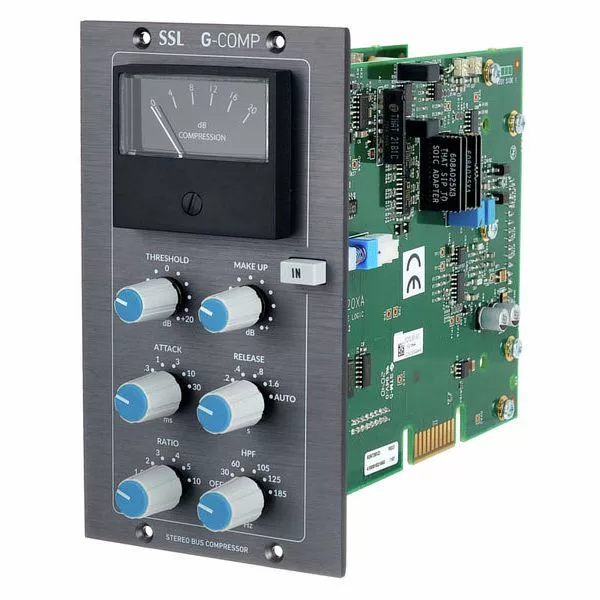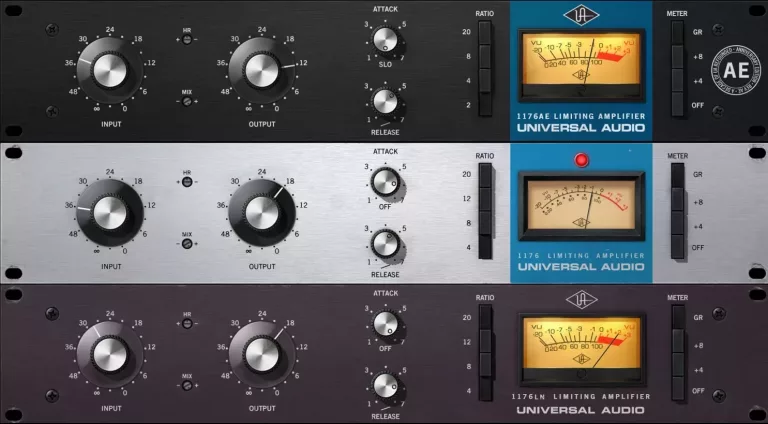Introduction to audio compressors: operation and basic principles
When it comes to producing music or mixing, audio processing is essential. In this area, audio compressors play a key role. These tools make it possible to control the sound dynamics by reducing the differences in volume. Thus, they improve the balance and consistency of sound. Understanding the operation and basic principles of audio compressors is therefore essential.
Audio Compressor Basics
• Definition of the audio compressor and its main role
An audio compressor is an essential sound processing tool used to control the dynamics of an audio signal. It works by automatically adjusting the signal volume level according to certain predefined parameters. Its main role is to attenuate the parts of the signal that exceed a certain threshold while preserving the overall sonic integrity.
• Key components of a compressor
An audio compressor is made up of several interconnected elements. The threshold determines the point from which the compressor will start to act. The ratio defines the intensity of the compression applied once the threshold is crossed. The attack controls the initial reaction time of the compressor, while the release determines how quickly the compressor stops acting after the signal level returns below the threshold. Finally, the makeup gain makes it possible to compensate for the reduction in volume resulting from the compression. We can also find the Input gain on some of the compressors.
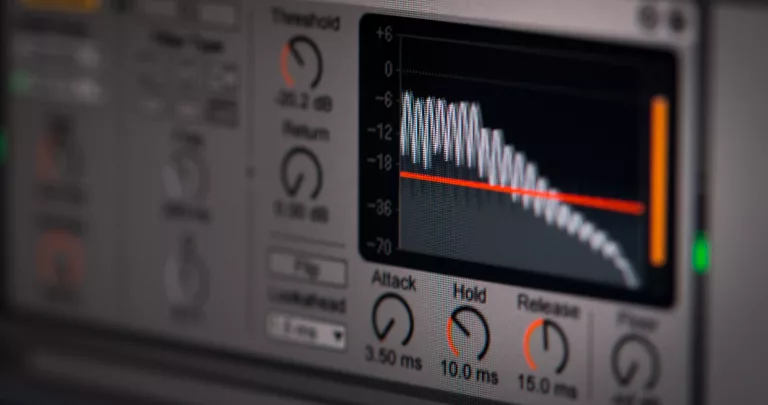

• Impact of compression on audio dynamics
Audio compression reduces the dynamics of a signal by attenuating louder parts, while quieter parts remain less affected. This allows for a more consistent and balanced volume level, making the signal more stable in a mix or music production. Compression can be used to control volume spikes, increase the presence of a sound, maintain a consistent vocal voice, etc.
Inner workings of an audio compressor
• Signal shaping: The Ratio
The incoming level plays a crucial role in the relationship with the threshold (threshold), the ratio and the outgoing level. When the incoming level exceeds the threshold, the compressor kicks in and applies a specific ratio to compress the signal, reducing the outgoing level proportionally.
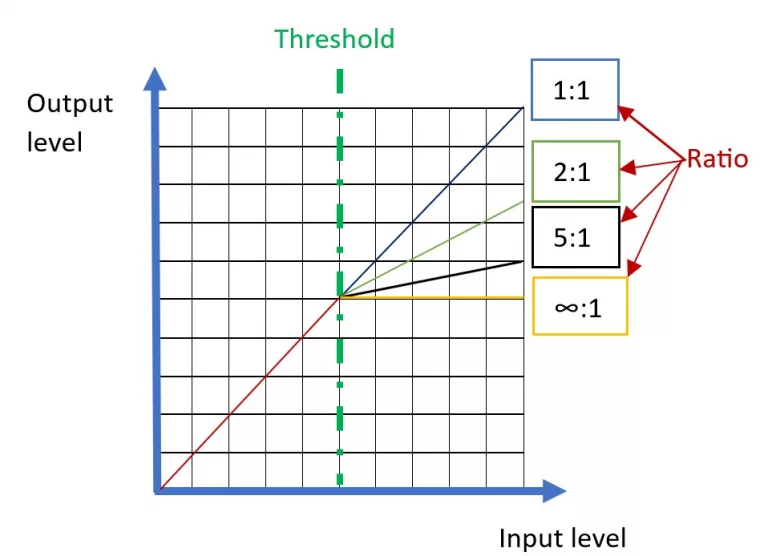

The “Soft knee” and “Hard knee” functionality refer to how the compressor reacts when it reaches the threshold. In a “Soft knee” mode, the compressor begins to act gradually before reaching the threshold, creating a smoother transition and subtle compression. On the other hand, in a “Hard knee” mode, the compressor applies an instantaneous compression as soon as the threshold is reached as in the diagram above, thus creating a more marked and abrupt compression. These modes make it possible to adapt the behavior of the compressor according to specific needs.
• Signal shaping: Peak reduction
Audible dynamic equalization aims to reduce excessive peaks in a signal to restore dynamic balance. To illustrate this, let’s take the example of a signal x whose peak level is around -3 dB. Suppose this difference is too audible and disturbing for the listener. In this case, our objective would be to reduce only the level of the peaks without altering the rest of the signal, in order to rebalance the overall dynamics.
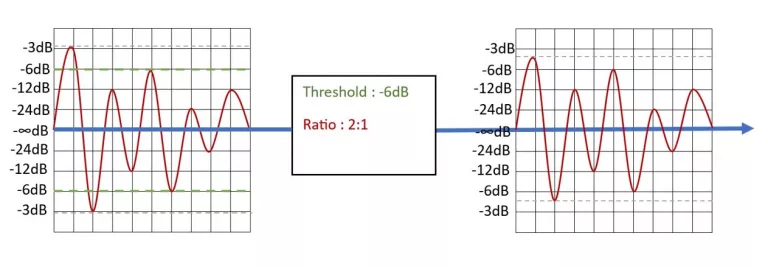

First, we analyzed the peak level, which was at -3dB, to determine the compressor threshold setting. We adjusted it to -6 dB to define the range of action of the compressor. Then, by choosing a ratio of 2:1, we halved the signal above -6 dB. Thus, the Y signal obtained now has a peak around -4.5 dB, resulting from a level reduction of 1.5 dB thanks to the compression.
-Peak level = -3dB
-Threshold = -6dB
-Interval between the two = 3dB
-Ratio = 2:1
-Reduced level in dB = 3/2 = 1.5
Peak level after compression in dB = -6 + 1.5 = -4.5
• Signal shaping: accentuation of attacks and/or release via compression.
By accentuating the attacks, we highlight the punch and the presence of the initial elements of the signal. At the same time, by controlling the release via compression, one can shape how the sound returns to its original level, creating a feeling of smoothness or sustain if the release time is long enough. If it is too fast you will feel a sound pumping effect, an effect quite similar to that used very often in electronic music, achieved by a sidechain between the kick and the bass for example.
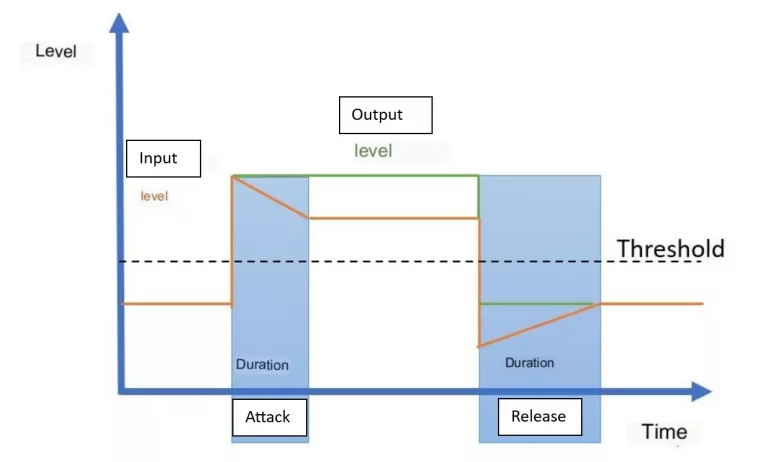

These compression techniques help sculpt and shape sound dynamics, bringing an expressive dimension and polished aesthetic to recordings and mixes.
Freesong analysis
FreeMastering Sample
Different areas of use
• Music production
In music production, audio compressors are widely used to enhance recordings by reducing level variations and providing a more consistent presence. Similarly, they are also applied to instruments to even out sound levels, control transients, and add texture to tracks.
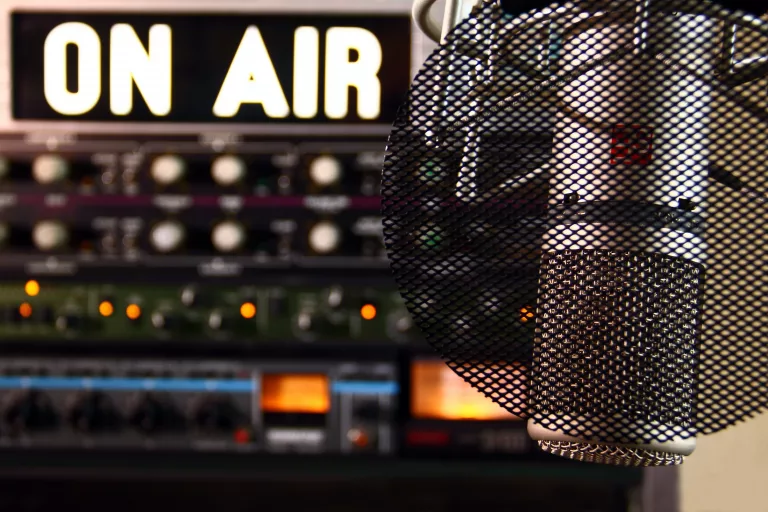

•Audio Mixing
In the signal flow of the audio mix, compressors play a vital role in balancing the sound levels of different tracks, reducing excessive peaks and even using them artistically. This improves the cohesiveness and consistency of the final mix.


•Podcast
In podcasting and live streaming, the use of audio compressors helps to optimize the sound quality of recordings and broadcasts. They help keep voices at a constant level, avoid unwanted peaks and improve understanding to deliver an enjoyable and immersive hearing experience for listeners.


The different types of compressors
• The VCA compressor, voltage controlled amplifier
The VCA Compressor uses a voltage-controlled amplifier to regulate sonic dynamics precisely and transparently. It therefore offers precise control over threshold, ratio and release time. It is therefore versatile for various applications. The VCA Compressor is renowned for its precise and transparent compression, making it an ideal choice for creating a “glue” effect on a band bus. It provides smooth, clean compression, helping to tie sound elements together in a cohesive and harmonious way.
The SSL compressor bus is an iconic compressor used on SSL (Solid State Logic) mixing consoles. It is often used on the main group bus of a mix, often referred to as the stereo bus or master bus.
The compressor bus is characterized by its VCA-based compression architecture. It therefore offers precise control over threshold, ratio, attack time and release time. This compressor is renowned for its ability to add punchy, transparent compression to the overall mix.
• The tube compressor
The tube compressor, also known as “Vari-mu“, uses tubes for signal compression. These tubes provide a distinctive and warm sound color. Their reaction is smooth and gradual as the signal exceeds the set threshold. Tube compressors are therefore often used to add vintage character and musicality to recordings.
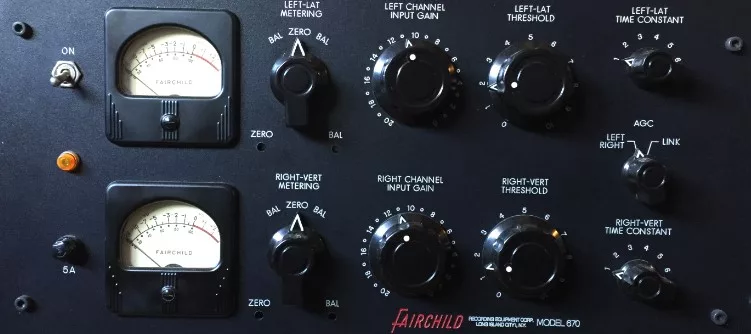

The Fairchild 670 is a legendary compressor of the analog era. It is considered one of the most sought after and revered compressors in the professional audio industry.
The Fairchild 670 is a compressor that offers smooth, transparent and very musical compression. It is renowned for its ability to add warmth, character and density to audio sources.
• The FET compressor, field effect transistor
The FET compressor uses field effect transistors to modulate the compression of the audio signal. It offers a very fast response to level variations (attack and release). It is therefore ideal for capturing the fast transients of instruments such as the various elements of a drum kit for example. FET compressors are often praised for their ability to add THD (Total Harmonic Distortion) to sound.
The 1176 Compressor is a legendary analog compressor, renowned for its distinctive sound and widespread use in the music industry. It was originally developed by the Universal Audio company in the 1960s.
The 1176 compressor uses FET (Field-Effect Transistor) technology for its compression. It is important to note that there are different revisions of the 1176 Compressor, so these revisions may have subtle variations in sound and behavior.
• The optical compressor
Inside the optical compressor, there is usually a combination of components such as a light source (usually an LED) and an optical sensor (usually a photodiode).
The optical compressor therefore offers a slower and smoother response than other types of compressors, thus giving it a smooth and natural compression. It is particularly effective at managing level peaks and creating a more balanced sound by reducing dynamic deviations. In this compressor family we find the legendary Teletronix LA-2A compressor.
• The diode bridge compressor
First, diode bridge compressors are a type of audio compressor that uses diodes to regulate signal compression. Inside these compressors is a circuit called a “diode bridge” which plays a key role in the compression process.
Second, the diode bridge is designed to introduce controlled harmonic distortion when the signal exceeds a certain threshold. When the audio signal exceeds this threshold, the bridge diodes begin to conduct and add harmonic distortion to the signal. This distortion therefore contributes to compressing the signal and reducing its dynamics.
Third, the distinctive sonic characteristic of diode bridge compressors is their ability to add pleasing harmonic distortion to the compressed signal. This can give the sound extra warmth, density and presence.
Conclusion
Audio compressors are therefore versatile tools that find use in a multitude of applications, ranging from music production and podcasting to mixing and live streaming. They help improve sound quality, control levels, and create more professional and engaging productions.

